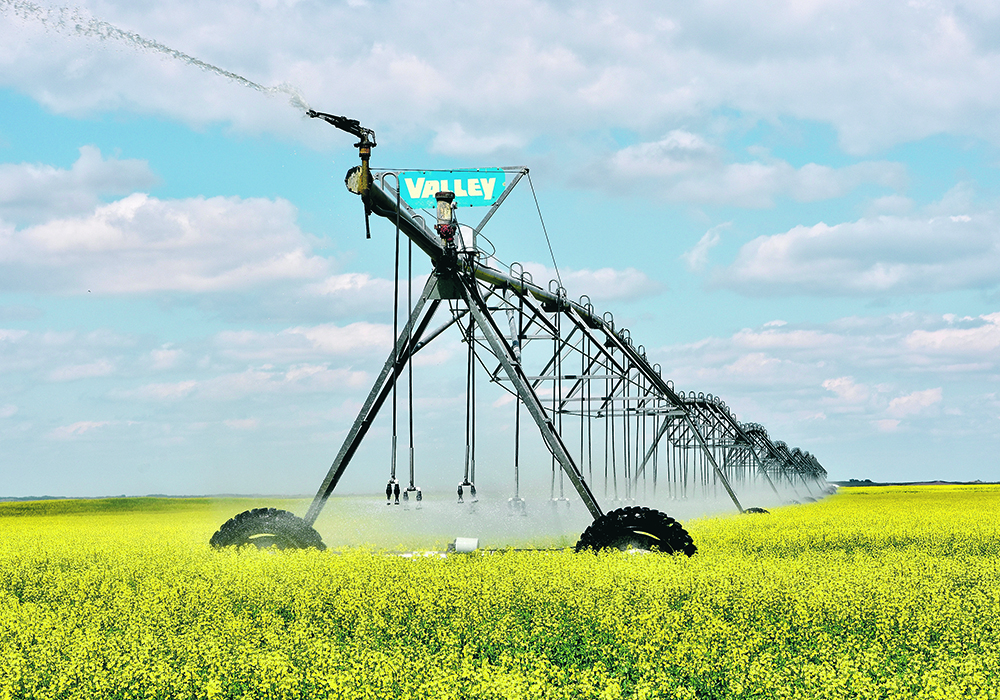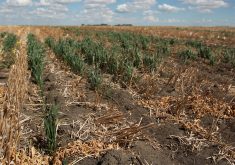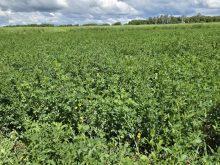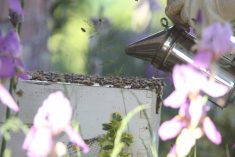Province asked for irrigation project commitment as even irrigation areas are hard hit by drought, grasshoppers this year
The council of the Rural Municipality of Rudy declared a drought disaster late last month even though it’s in the heart of Saskatchewan’s main irrigation area.
The RM said drought and grasshopper infestations created the agricultural disaster. Less than 25 millimetres of rain have fallen in much of the region around Outlook.
“In the RM of Rudy considerable irrigation assets present a potential bright spot for some production, but the constant demands are straining the available infrastructure to deliver above its current capacity,” the council said in a news release.
Read Also

Government, industry seek canola tariff resolution
Governments and industry continue to discuss how best to deal with Chinese tariffs on Canadian agricultural products, particularly canola.
“Pumps have been running non-stop all this growing season, causing problems like overheating and unplanned shutdowns.”
Earlier this summer, irrigators had to stop watering 48,000 acres for three days so temporary pumps could be brought in and electrical work done.
Council said lasting protection from drought should come from a government commitment to fund the irrigation expansion plan announced three years ago. That plan is the largest infrastructure project in Saskatchewan’s history. It was a $4-billion project to double irrigated acres from Lake Diefenbaker to more than 500,000 acres through a rehabilitation and expansion of the Westside Irrigation Project and construction of the Qu’Appelle South Water Conveyance Project.
However, the project is still in its due diligence phase and the minister responsible for the Water Security Agency said costs are rising.
“We are continuing with pre-engineering to narrow down exactly what the cost is,” Jeremy Cockrill said in a recent interview. “The initial engineering work didn’t account for some of the large engineering challenges. It didn’t quite capture the topography and the challenge of moving water uphill in some areas.”
Work is focused on the Westside project since it was mostly completed in the 1970s before a new government abandoned it.
Cockrill said smaller-scale irrigation expansion in other areas continues as the government works to meet its growth plan goal of 80,000 acres. He said that goal will likely be exceeded.
However, finances are a constant concern whether the projects are large or small, and government has to make sure that it’s reasonable in the end, he added.
“Anything the government does is with taxpayer dollars. We have to be financially responsible as much as we can be.”
Saskatchewan continues to court the federal government as a partner.
Former Regina Liberal cabinet minister Ralph Goodale championed the project, but he wasn’t re-elected in the 2019 election. The Canada Water Agency, which many had hoped would be located in Regina and perhaps serve as a catalyst, has gone to Winnipeg instead.
The federal government has not come forward with an offer.
“They have communicated to us that the Canada Infrastructure Bank is the best avenue to work through. We don’t view a loan as a true partnership,” Cockrill said.
He said irrigation expansion is in the national interest. It would ensure food security and offer climate change resiliency.
Cockrill said the RM of Rudy’s declaration is an indication of the stress farmers are under this year and points to the strong case for irrigation in Saskatchewan.


















